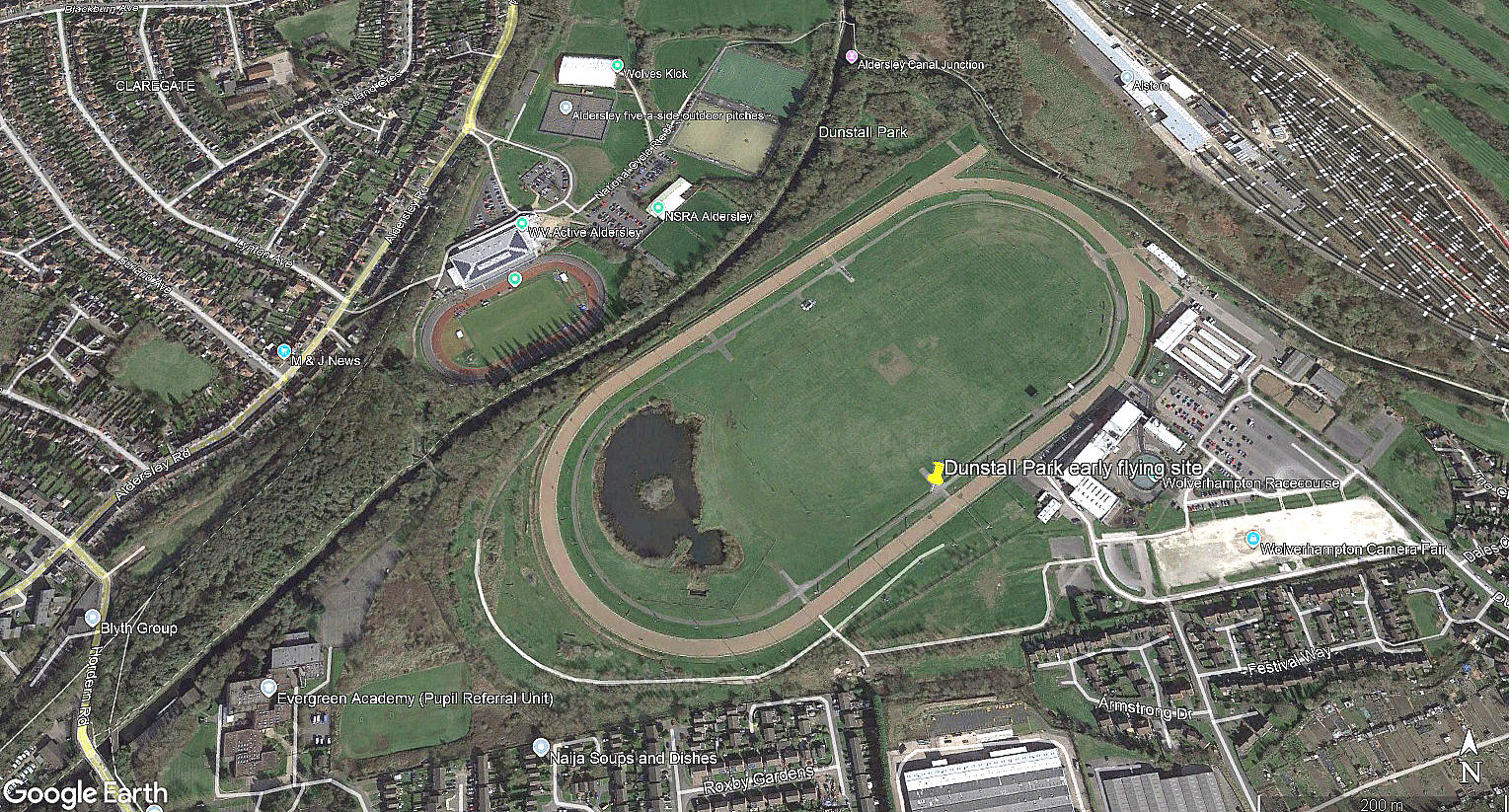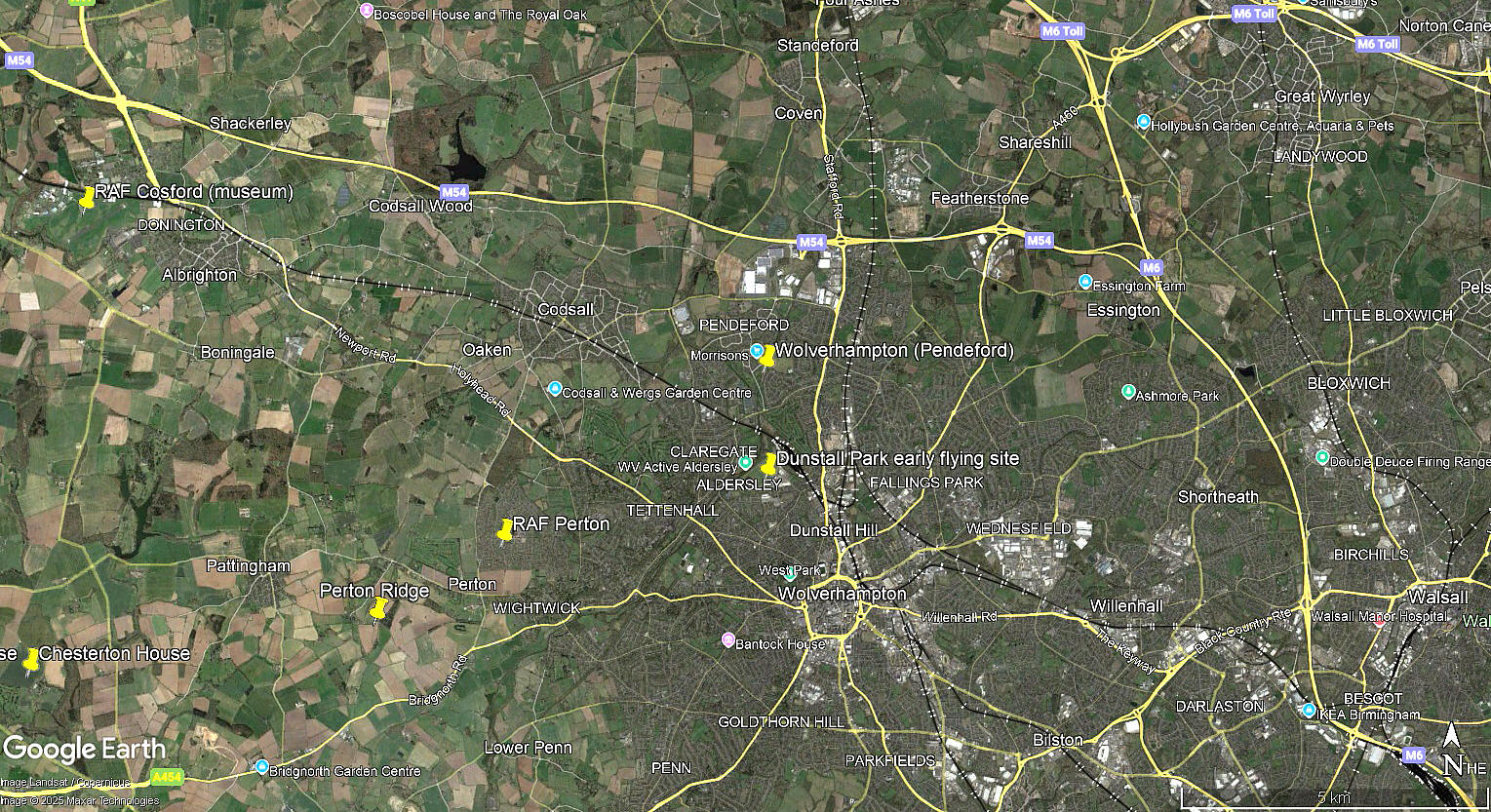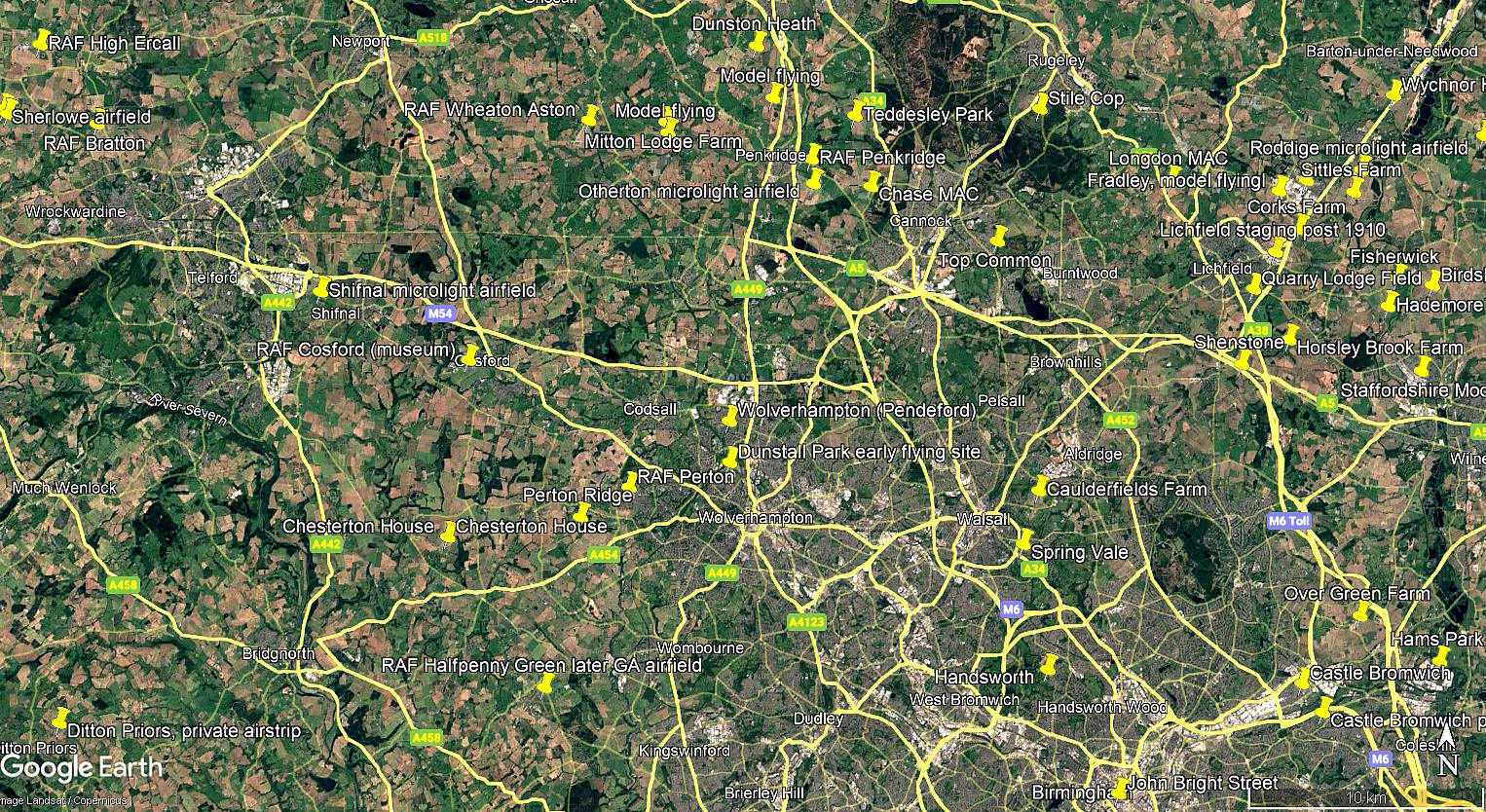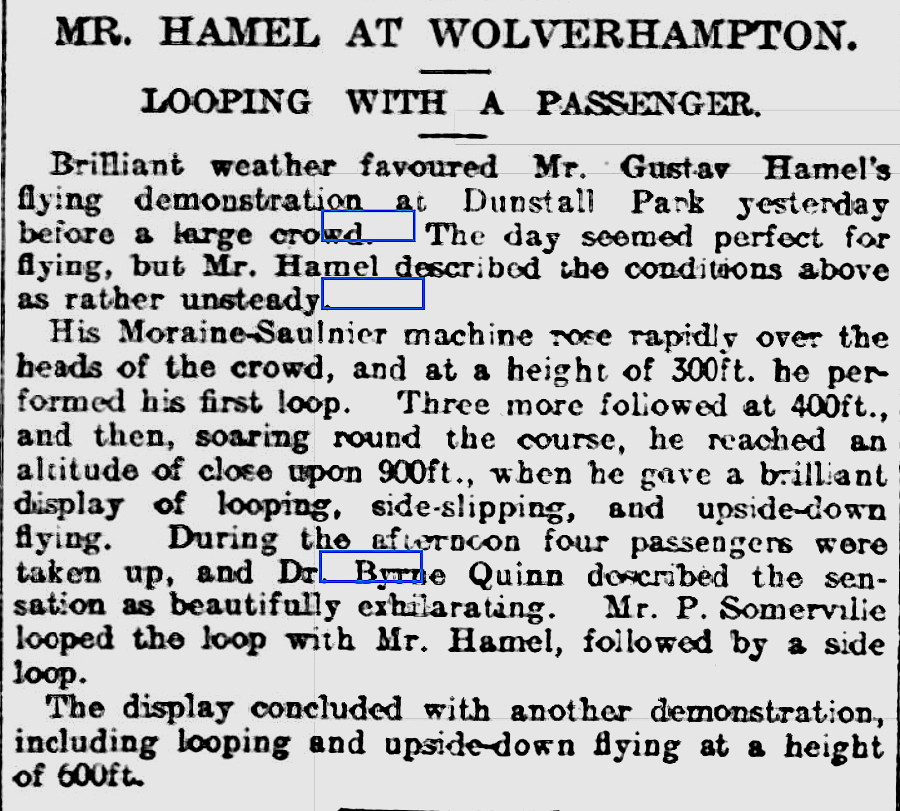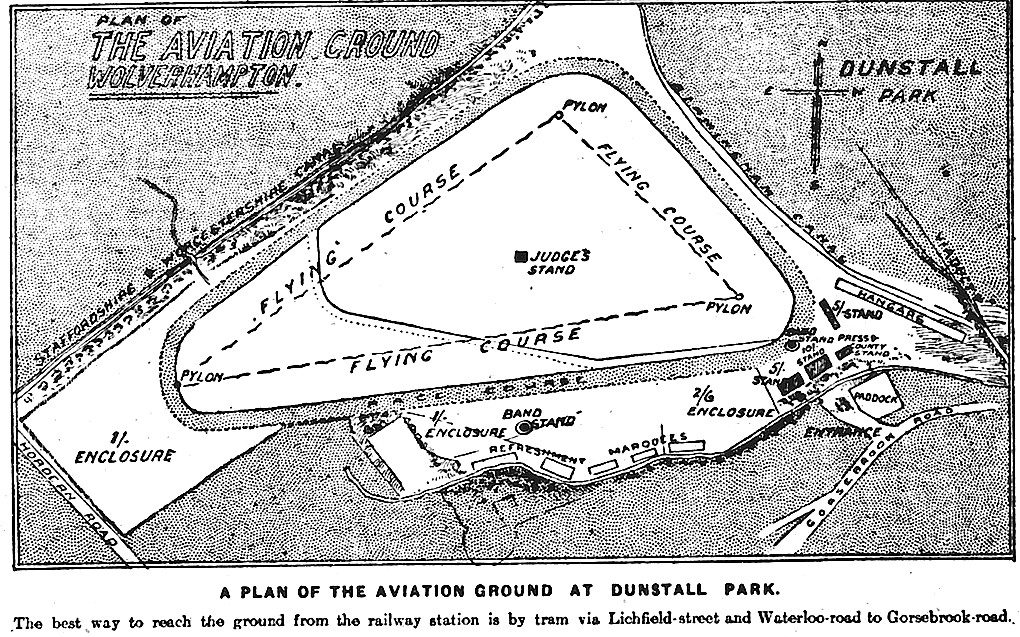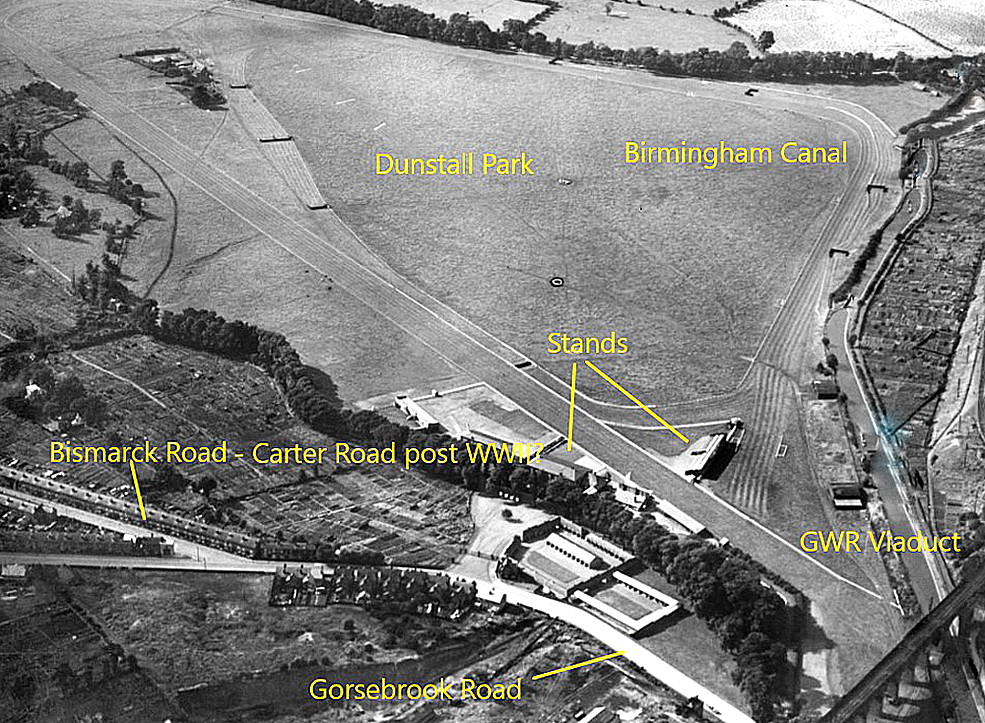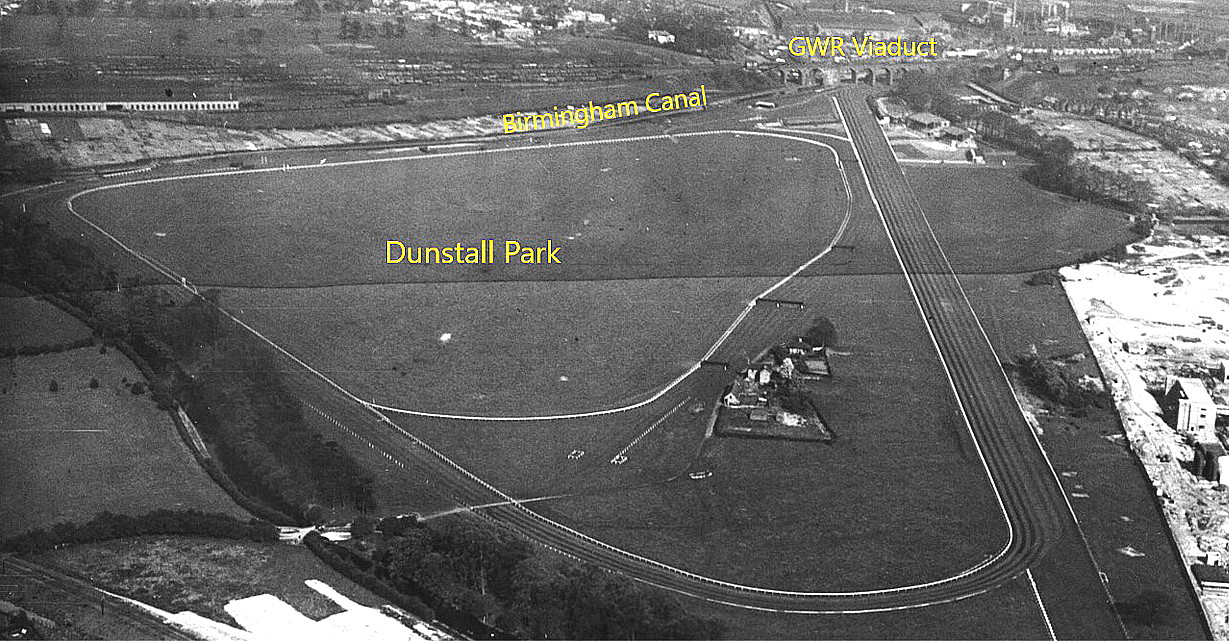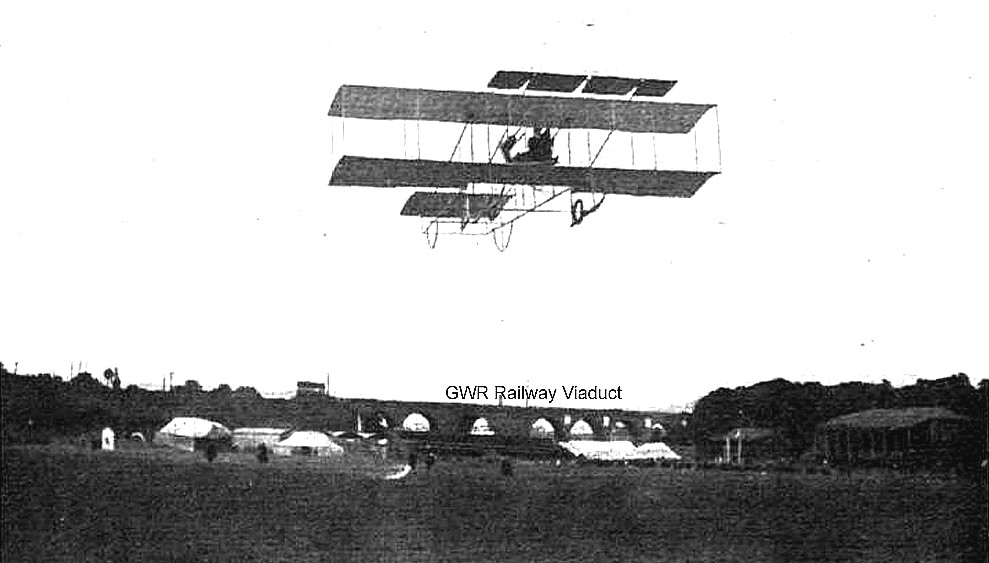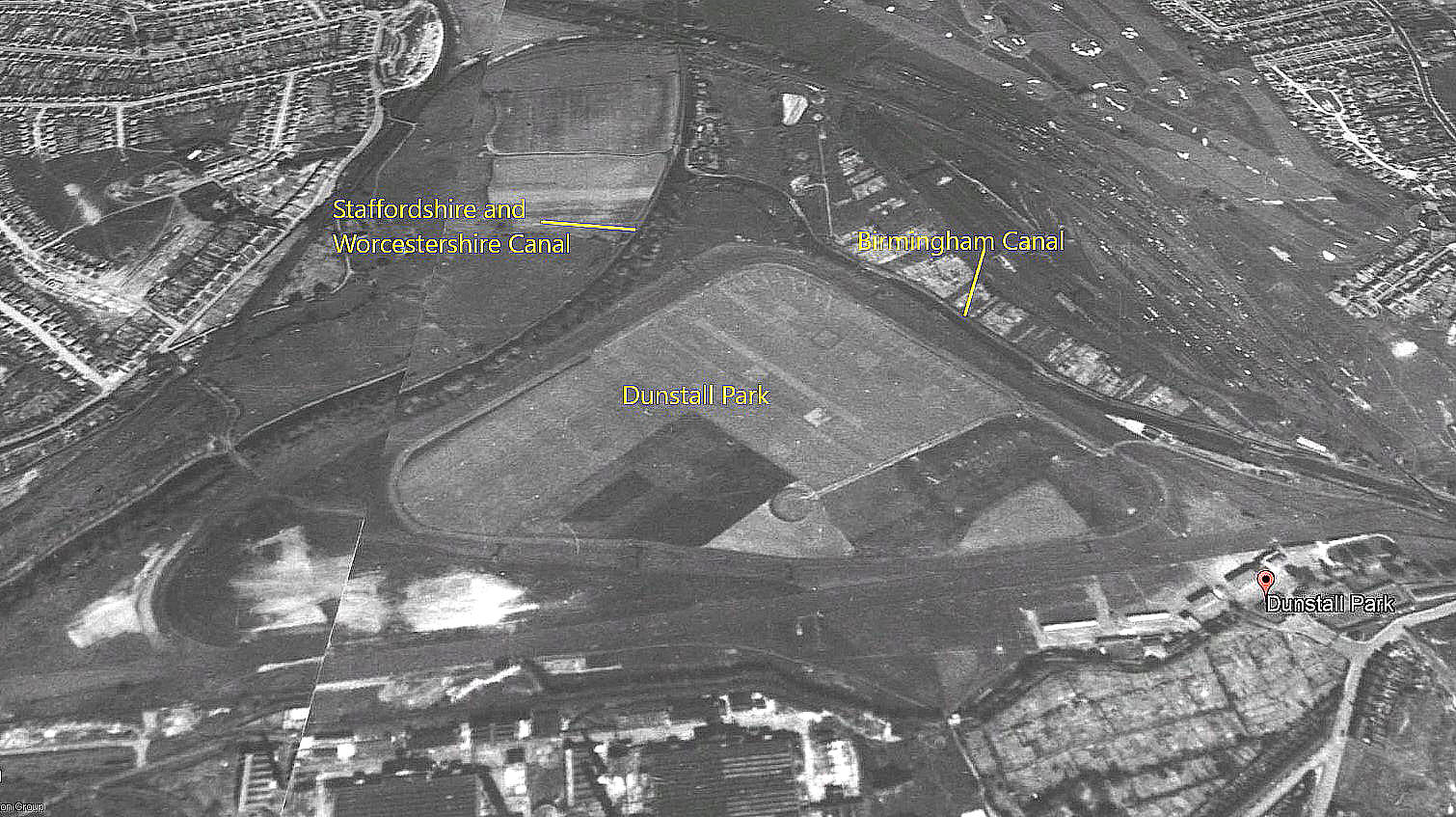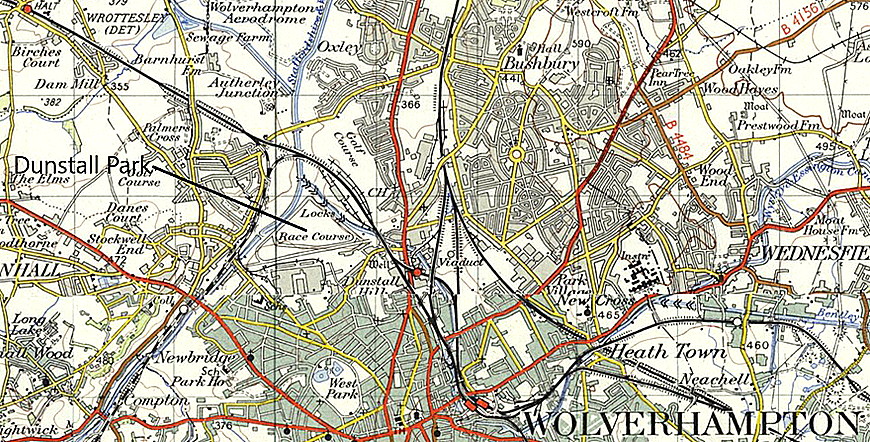Dunstall Park
DUNSTALL PARK: Early aerodrome also used for flying displays and aerial competitions, later military Landing Ground, and later still possibly used as a temporary aerodrome? Now a major horse racecourse
The local view was obtained from Google Earth ©. The local area and area views are from my Google Earth © derived database. Which does not show all the locations in this 'Guide' pinned.
Balloon operations: 1911 Operated by: Lt. Lemprière
Military user: WW1: RFC Night Landing Ground
38 [Home Defence] Squadron (Royal Aircraft Factory B.E.2c and F.E.2b types)
Location: About 1.5 nm NNW of Wolverhampton town centre
Period of operation: 1910 to ? WW1: April to August 1916. Possibly in the 1920s and 1930s as a venue for touring air displays?
NOTES: A fairly big flying meeting was held here from the 27th June to 2nd July 1910. It is said to have been very disappointing due to bad weather and most of the flying took place on the last day. Even then, "…. the committee was criticised for permitting ascents. Five machines were broken, four of them badly smashed.”
A QUESTION?
On the 26th July 1910 Capt George Dawes was granted his Pilots Certificate No.17 flying a Humber Monoplane from WOLVERHAMPTON. Bearing in mind that in those days the date referred to the issue of the Certificate and not the date when the flying test was passed this does seem to indicate the existence of a flying school in this area prior to the air meeting taking place. Although by no means proof it does seem likely he learnt to fly from DUNSTALL PARK - unless you know otherwise of course.
THE AVIATION MEETING
Later information about the DUNSTALL PARK ‘Aviation Meeting’ shows that in the weeks prior to the official opening of the Meeting, three aeroplanes – Mr Bradshaw’s ‘Star’, Mr Holder’s ‘Humber’ and Dr Hand’s ‘Demoiselle’ were in residence. On the 15th June Capt Dawes’ Blériot was badly damaged when, “having orbited the Park once and just passed over some trees, it swooped down and then shot up again, (when it stalled I’d say), then fell sideways fifty feet, (classic symptoms of a stall, wing drop before entering the incipient spin stage).” Dawes escaped unhurt!
Very interesting this, because I imagine he was flung clear on impact? It wasn’t until many years later that the harness was invented and probably two decades or more until they were commonly used, especially in civil aircraft. In fact passengers were regularly taken up to “loop-the-loop” without they or the pilot being strapped in. Today the pilot of a modern aircraft would be strapped in, but, stalling in so close to the ground, serious injury or fatal consequences would be expected.
THE PLANNED ITINERARY
On the opening day Cecil Grace demonstrated the new Short S.27 biplane powered by a 40hp ENV engine. It appears nineteen aircraft entered although three failed the preliminary trials.
The itinerary is worth mentioning including competitions for cross-country flying, (via Albrighton, Cosford and Tettenhall - twenty-one miles), longest time airborne, carrying passengers, bomb throwing and figure flying. It appears that the organisers decision, “to allow only pilots with certificates, or able to prove their ability to fly safely,” hugely disappointed some entrants!
For much fuller accounts please read ‘Aviation in Birmingham’ by Geoffrey Negus & Tommy Staddon, a great read. Included are many rare pictures and one is of the Mayfly which is either truly fantastic or a monstrosity depending on your view, designed by Lt John W Seddon and Walter Hackett. A caption says, “Good heavens,” said the chief designer, “you’ve built my doodles!” It does look like this might well be the case too and needless to say it never flew.
AIRSHIPS
The airship was very much a major attraction during the early years of the 20th century and E T Willows wanted to fly his airship from Watford to Wolverhampton in March 1911. Gale force winds prevented this attempt so he transported his aiship to the WEST MIDLANDS by rail. It was filled with hydrogen at the Knowle Works on Friday 11th March taking ninety minutes to inflate the 42,000 cu ft envelope, then moved/flown to DUNSTALL PARK. The following afternoon Willows ascended to fly over Walsall and Great Barr when shortly after a feed pipe (presumably supplying fuel to the engine) came adrift forcing them to land in a field. Not so far from Spaghetti Junction I’d suppose? Getting the problem fixed with his mechanic and the help of Gilbert Dennison of the Birmingham Aero Club who was aboard, the flew on to Handsworth Heath circling Dennison’s house twice, (a splendid example of quasi-cronyism as he tried desperately hard to employ to enable him to keep flying), before flying more south to the Town Hall and Council House at between 600 and 900ft attracting a big crowd before returning to DUNSTALL PARK. As said elsewhere it is so hard today to imagine the electrifying effect on the general population upon seeing any type of flying machine in those days.
BALLOON FLIGHTS
In September 1911 the Midland Aero Club launched a scheme whereby Lt Lemprière’s balloon could be hired out carrying up to three passengers for twelve guineas. A twelve inch gas main had been installed at DUNSTALL PARK to effect speedy inflation although it does seem this balloon could be hired for use at other locations.
AN ODD TALE
In 1913 Bentfield C Hucks, at the request of the Midland Aero Club, made some flights here, possibly flying a Blériot? It appears the amount of interest, even amongst club members, “was disappointing.” Indeed, it is reported: “The continuation of the Club, in view of lack of support, was under discussion.” Quite frankly I’m not in the least surprised - if the best flying they could muster required blokes running across a field at 6 to 7mph towing a glider in about a 30mph wind, (see BILLERSLEY FARM), I’d have got hacked off the first day after joining the club!
Doubly odd is that in those days B C Hucks was a renowned 'star turn' and it seems rather odd that people, ostensibly interested in aviation, weren't queueing up to see him perform. This of course may well have been before Hucks became the first Briton to perform a loop, which he demonstrated at HENDON (LONDON) in September 1913.
A MUCH BETTER RESULT
This article published in the Birmingham Mail on the 17th April 1914. In those days, any aviator, let alone a very famous one, performing loops, was a major draw for attracting large crowds of spectators. There is today some speculation about who, in the world, was the first aviator to perform a loop? Probably a Russian pilot?
A MICHAEL T HOLDER GALLERY
We have Mike Holder, a great friend of this 'Guide'. to thank for providing the following items.
This map of the three pylon flying course was published in the Daily News (London) on the 27th June 1910.
JUST MY OPINION. The photo shows Mr Cecil Grace flying his Short S.27 biplane, a type that although modified by the Short brothers, is very much a design progression of the Wright brothers 'Flyer' which really was an awful aeroplane to fly. As mentioned above, five machines were badly damaged, indeed wrecked, during the 1910 meeting.
In those days the typical technique for turning was to apply rudder, in effect making a 'skidding turn' without much if any banking involved. Plus, in that era the secondary effects of aerodynamic controls where not understood. Use of the rudder has a secondary effect of inducing roll. I may well be guilty of 'over-thinking' this of course, but, to me the quite sharp turn at the western end of this three-pylon race course, needing to sustain a turn through around 150 degrees, must surely have resulted in an ever increasing degree of bank angle?
A situation, being so low to the ground, (could, I would suggest), be giving the pilot the impression of losing control? And, would he have realised that the best remedy would have been to apply full opposite rudder? Something I expect would have been, to say the least, counter-intuative. Also of course, at that time, using wing-warping, (or ailerons if fitted), would have had little if any effect? Indeed, when I was being taught to fly back in the 1980s, the recovery technique if in a spiral dive, was to use the rudder - and a bloody good bootful too! Forget about the ailerons, at least initially.
A PERSONAL MEMORY
Note: Here is a picture of my second 'A-frame' draw-bar rig at DUNSTALL PARK in August 1994. I was engaged in delivering and assisting with a travelling exhibition to several major racecourses promoting 'white goods' for a major manufacturer. But, when taking this picture I had yet to embark on my research project to discover the history of British flying sites, and was therefore completely unaware that I was in fact visiting 'hallowed turf' in the early sequence of major flying sites before WW1.
Alf Jenks
This comment was written on: 2015-11-11 12:54:57The Midland Aero Club were never at Billesley Common it was the Birmingham Aero Club who were there.
Reply from Dick Flute:
Hi Alf, Many thanks. I shall include this information in the text. Best regards, Dick
Reply from Dick Flute:
Hi Alf, I have now had a look at my listing and I think you will find that I have not stated that any aero club was based there. Did you intend to mention another site? Regards, Dick
We'd love to hear from you, so please scroll down to leave a comment!
Leave a comment ...
Copyright (c) UK Airfield Guide















